
Ambient music is a genre of music that emphasizes tone and atmosphere over traditional musical structure or rhythm. It may lack net composition, beat, or structured melody. It uses textural layers of sound that can reward both passive and active listening and encourage a sense of calm or contemplation. The genre is said to evoke an "atmospheric", "visual", or "unobtrusive" quality. Nature soundscapes may be included, and the sounds of acoustic instruments such as the piano, strings and flute may be emulated through a synthesizer.

Ambient 1: Music for Airports is the sixth studio album by Brian Eno, released in 1978 by Polydor Records. It is the first of Eno's albums released under the label of ambient music, a genre of music intended to "induce calm and a space to think" while remaining "as ignorable as it is interesting". While not Eno's earliest entry in the style, it is credited with coining the term.
Oblique Strategies is a card-based method for promoting creativity jointly created by musician/artist Brian Eno and multimedia artist Peter Schmidt, first published in 1975. Physically, it takes the form of a deck of 7-by-9-centimetre printed cards in a black box. Each card offers a challenging constraint intended to help artists break creative blocks by encouraging lateral thinking.

Thursday Afternoon is the tenth solo studio album by Brian Eno, released in October 1985 on EG Records. Consisting of one 60-minute eponymous composition, it is the rearranged soundtrack to an 80-minute video production of the same title made in 1984.

Another Day on Earth is the twenty-second solo studio album by Brian Eno, released on 13 June 2005 in the UK and Europe through Hannibal Records, and on 14 June 2005 in the US. The album predominantly recorded and mixed on Macintosh software, using Logic Pro, over a period of four years.
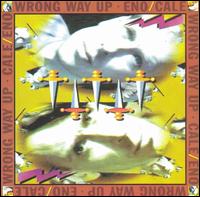
Wrong Way Up is the sole collaborative studio album by Brian Eno and John Cale, originally released on October 5, 1990 on Opal and Warner Bros. Records. The album sits between the electronic, prog-rock and art rock genres and features some of both Eno and Cale's most mainstream work.

The Shutov Assembly is the twelfth solo studio album by Brian Eno, released on 10 November 1992 on Opal via Warner Bros. Records. One of Eno's ambient albums, it was reissued in 2014 with a second disc with bonus tracks. It is considered the follow-up to Nerve Net, which was released that same year.

The production and album discography of Brian Eno primarily consists of 29 solo studio albums, 22 collaborative studio albums, 18 compilation albums, one remix album, four video albums, nine extended plays, and 27 singles, as well as numerous productions credits from numerous artists & bands' singles, albums and compilations. Opal Records was launched in 1987 by Brian Eno as label for the US market, where it was distributed by Warner Bros until 1993. He further used the name for releases of the music of his installations.
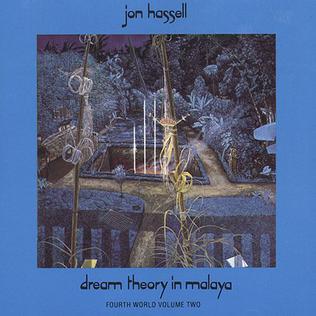
Dream Theory in Malaya: Fourth World Volume Two is an album by Jon Hassell, released in 1981. It is the sequel to his collaboration with Brian Eno, Fourth World Vol. 1: Possible Musics, which was released the previous year. The recording draws influence from the culture of the Senoi people of Malaya.

Music for Civic Recovery Centre is the nineteenth solo studio album by Brian Eno, released in 2000. Part of Eno's Quiet Club series of Installations, is Eno's third release that has a sole composition.
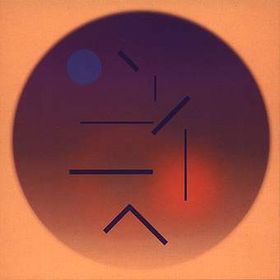
I Dormienti is the seventeenth solo studio album Brian Eno, released in 1999. It is also the title of an art-book by Eno and Italian painter, sculptor and set designer Mimmo Paladino, released in 2000, packaged with a copy of the album and featuring pictures & sketches of the installation from which the music is drawn. The music on the album is taken from an installation that took place at the undercroft of the Roundhouse, Chalk Farm Road, Camden, London, from 9 September to 6 October 1999.

January 07003 is the twenty-first solo studio album by Brian Eno, released in 2003.
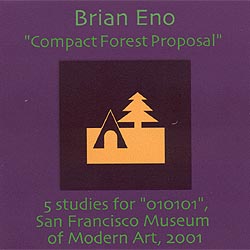
"Compact Forest Proposal" is the twentieth solo studio album from Brian Eno, released in February 2001.

"Lightness" is the sixteenth solo studio album by Brian Eno, released in 1997, and re-released in 2000 by Opal Music. The music on the album was made for an Installation—a show featuring music and visuals—that took place at the Marble Palace in Saint Petersburg, which accommodates permanent exhibitions of the State Russian Museum, from November to mid-December 1997.

Extracts from Music for White Cube, London 1997 is the seventeenth solo studio album from British musician Brian Eno, released in 1997.
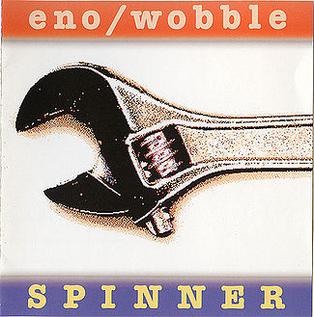
Spinner is an instrumental album by British musicians Brian Eno and Jah Wobble, released in 1995.

77 Million Paintings is a digital art software/DVD combination by British musician Brian Eno, released in 2006.

Brian Peter George St John le Baptiste de la Salle Eno, also known by the mononym Eno, is an English musician, composer, record producer and visual artist. He is best known for his pioneering contributions to ambient music and electronica, and for producing, recording, and writing works in rock and pop music. A self-described "non-musician", Eno has helped introduce unconventional concepts and approaches to contemporary music. He has been described as one of popular music's most influential and innovative figures. In 2019, he was inducted into the Rock and Roll Hall of Fame as a member of Roxy Music.

(No Pussyfooting) is the debut studio album by the British duo Fripp & Eno, released in 1973. (No Pussyfooting) was the first of three major collaborations between the musicians, growing out of Brian Eno's early tape delay looping experiments and Robert Fripp's "Frippertronics" electric guitar technique.

The Ship is the twenty-sixth solo studio album by Brian Eno, released on 29 April 2016 on Warp Records. Announced on Eno's website on 24 February 2016, it was Eno's first solo album to contain vocals since 2005's Another Day on Earth. The Ship debuted at number 28 on the UK Albums Chart and is the second highest-charting solo album of Eno's solo career The album received critical acclaim.



















